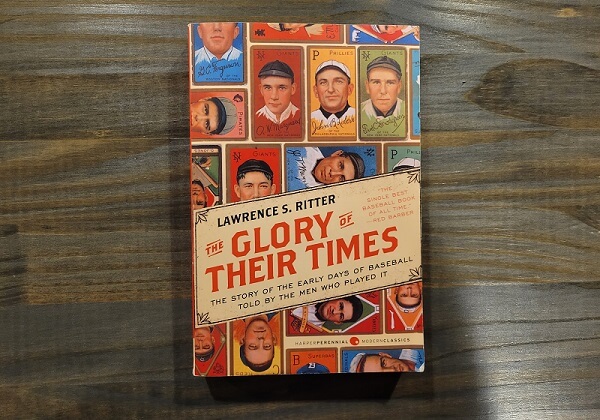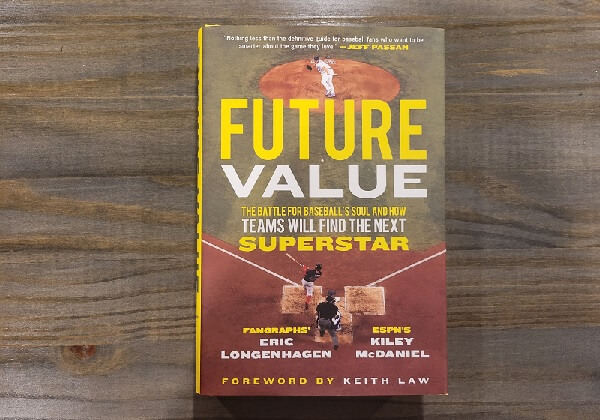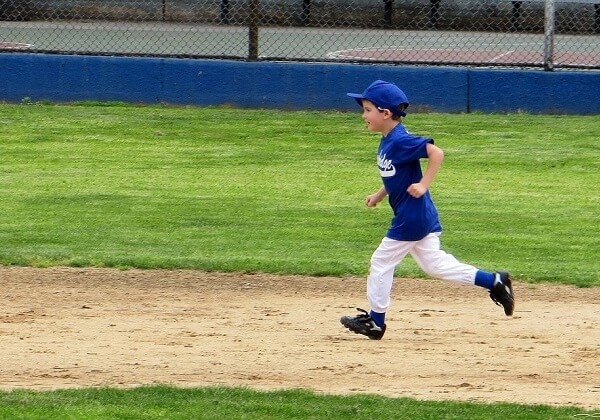Unwritten rules of baseball: the stupid, broken, and OK
by Fred Hofstetter on July 1, 2021While several unwritten baseball rules are worthy only of laughter and derision, they aren't all stupid, and there's a good reason they exist.

Unwritten baseball rules result in a lot of this. Photo via Flickr.
Unwritten rules garner substantial chatter. These conversations sculpt the shape the game in its current moment: its conventions, its standards of practice, its place in the world of sport and competition. And you won’t find any of them in the rule book.
All sports follow self-policed unspoken agreements, and over the course of its history, Major League Baseball has developed its own set of unique unwritten rules; some silly, some stupid, and some apt.
My list below certainly does not include them all. But here’s a handful of my favorites.
1. Don’t run up the score.
The rule: When you are winning by a comfortable margin, let off the gas pedal and coast your way to the win without trying too hard.
This unwritten rule closely relates to the don’t-swing-on-3-0 rule, but it paints a broader brush. You can determine when this unwritten rule is broken when a team getting its pants kicked starts getting ornery. There is no established number-of-runs lead that triggers the observance of this rule, only the pants-kicked team’s patience.
And that’s just the problem. I could almost respect this unwritten rule if there was a particular run differential specified to indicate when a baseball game is in run-up mode. 10 runs? 12 runs? I’m not sure, but it would have a be a lot.
We’ve seen a lot of MLB teams get chippy about guys taking homerun swings off of pitching position players. Or stealing bases late in games that are all but decided. Hard slides.
Patronizing your opponent is not a sign of respect. Playing hard up through the last pitch projects if we don’t keep our focus and get ‘em while we can, these guys could come back.
You only get 9 innings. Letting up does the game a disservice.
The bottom line: if you don’t want to get beat, play better.
Verdict: Stupid, Ridiculous
2. Don’t swing on 3-0 when you have a comfortable lead.
The rule: When your team has a comfortable lead, don’t swing in a 3-0 count.
The 3-0 rule offense pops up every once in a while. This is a specific version of the “don’t run up the score” unwritten rule, but this provides tangible parameters. When you find yourself way ahead in the count, and way ahead in the game, this is your moment to show you’re releasing the gas pedal and supposedly showing respect for your opponent by giving them a chance to rebound from patheticism.
Here’s Fernando Tatis Jr. swinging 3-0 when up by 7:
Here’s Tony La Russa criticizing his own player for the offense:
I think it makes every bit as much sense to insist a batter should swing 3-0 in a situation like this. The game is essentially over. The losing team just wants it to end. But their pitcher can’t find the strike zone. Is it really better to auto-take and risk taking a walk? Is that really preferable? By auto-taking on 3-0 there’s a good chance you reach base on a walk, then the next batter comes up to see several consecutive pitches he’s allowed to swing at – until it gets to 3-0 again.
Again, this boils down to sour grapes. Petty. Keeping the bat on the shoulder does not show any respect for your opponent. It shows the opposite. Play all 9 innings hard and smart regardless of the score.
Verdict: Really Stupid, Really Ridiculous
3. Get too cocky, get hit by a pitch.
The rule: Celebrate too much after a homerun, and you’re owed one in the ribs.
So here’s where I lean the most old school, and most likely to ruffle your feathers, dear reader. There are two takes I take simultaneously:
- The Cardinals, as self-appointed Police of Baseball (the “Cardinal Way”), are obnoxious and their holier-than-thou attitude is a constant annoyance. Let people have fun. Lighten up. As I write, this feels like a 5-year old take. Maybe it’s not the Cardinals as much these days. But you know what I’m talking about.
- When you do something well, don’t be a cocky bastard about it. Patting yourself on the back is gross. Those who expect greatness from themselves aren’t surprised when it happens
There’s a petty revenge trope. When someone gets a little too full of themselves and rubs your face in it. You think they’ll get theirs. And when they do, it feels wonderful. When the bully gets what’s coming. When Karma rears its ugly, beautiful head.
Purposefully throwing at a guy’s head is one thing. Out of order. As a work-from-home keyboard warrior even the idea of throwing at a guy anywhere makes me a little squeamish.
But I do think flamboyantly celebrating yourself is kind of gross. And you deserve a humility check.
On bat flips.
There’s an establishing narrative that bat flips = fun. People who curve an eyebrow at a bat flip aren’t fun. They want to ruin fun. The aforementioned past Cardinals. Here’s where that fun racist word gets tossed in, just for good measure. That’s true for some. The real prudes.
But in my opinion, there are absolutely offensive bat flips that deserve no adoration, and we should not fear the appearance of prudishness in prosecution of those offenses. The worst bat flips of all are those committed by the team your favorite team is playing against. Those are egregious.
Most are just fun. But when bat flipping complements some obnoxious self-aggrandizement? Spare me.
In general—lighten up, pitchers. There’s a 95% chance it isn’t personal. But I get it. Just aim low. Connect too high and it can really mess someone up (and you).
Verdict: I Get It, But Chill Out
4. When you get a bad ball/strike call, the umpire owes your team one.
The rule: If a home plate umpire whiffs on a strike call and wrecks your at bat, he owes your team a make-up call.
When people fairly press the issue on robot umpires, it’s the “human element” in situations like this I must admit I’d miss if it was gone. Everything represents a trade-off. I would absolutely not miss belligerent umpires with a whacky strike zone and a quick eject finger. Surely players arguing balls and strikes with a robotic umpire would yield tremendous entertainment value. But this dynamic carries the dose of charm partially responsible for the warm romantic fuzzies I have for baseball.
Umpires are still humans. And humans, even the best, will make mistakes. And these mistakes will most often help one team and impair the other. Baseball is a game rife with opportunity, failure, and redemption. And it applies to umpires, too. When they miss a call, they know it. And the game offers them an avenue to make things right, even if it’s a little messy.
This self-policing unwritten rule likely represents one of the least polarizing on this list. It’s for good reason.
Verdict: Legitimate
5. Never put the tying or winning run on base.
The rule: If the batter represents the tying or winning run, do not walk them.
Here are better things to do with the tying or winning run at the plate:
- Don’t allow them to hit a home run
- Don’t allow them to get a hit
Or how about…just don’t let anyone on base? Ever?
Verdict: Duh
6. Never make the first or third out at third.
The rule: Making outs at third base feels really bad. So it’s even badder when you make the first or third out at that base.
But not the second. The second’s OK.
Again—arbitrary. I get the emotional argument. Third base is really close to home plate and it feels really bad when an out happens there. Because you were so close.
Some outs at third base are worse than others. But it’s less often about which out in the inning as much as it’s the nature of the out. When it’s over aggression, indecision, or miscalculation.
Verdict: Sure, But Duh
7. Don’t walk across the pitcher’s mound.
The rule: Batters aren’t allowed to walk or jog across the pitcher’s mound.
This is a weird one to me.
When a batter makes an out or thrown out on the basepaths, he must then return to his team’s dugout. The ideal path for such a journey is a straight line, the shortest and most efficient path. However, oftentimes the pitcher’s mound rests right on that straight line, and players are forced to make an awkward semicircle detour to avoid the mound and risk upsetting a highly territorial pitcher.
Here’s what I could understand getting upset about: if a batter stopped on the mound and intentionally started scuffing up the rubber or digging at the plant foot area. Those are obvious fighting words. A pitcher – and his teammates – are wholly justified in hostile response.
But just trotting over the dirt area of the pitcher’s mound? Who cares?
Verdict: Usually Stupid, Ridiculous
8. Don’t bunt to break up a no-hitter.
The rule: When a pitcher is making a bid at a perfect game or no-hitter, do not try to bunt to reach base.
I respect the counterargument. You have to try and get on base and win the game any way you can. Bunting, especially when the defense aggressively shifts, can be a good tool to easily reach first base.
Up until this point my patience for the conventional arguments based in respect/honor. In this case I can’t fight the reflexive groan I’ve uttered the few times I’ve seen someone square around trying to break up a no-hitter.
I’d describe it this way: this guy brought his best today, so dig in the box and bring yours. Bunting to break up a no-hitter is kicking a man in the testicles. Sure, it works. But c’mon, man. Is that who you want to be? Not I.
Some things in baseball are bigger than winning. Players don’t like it. I’d estimate fans don’t really like it. It’s a cheap move, and I get why people get bent out of shape about it.
Verdict: Legitimate
9. Never discuss a no-hitter.
The rule: If you verbally acknowledge a no-hitter is happening, you’ve doomed it to fail.
I love this one.
Rules like this fuel my love for baseball, and sports in general. I have a soft spot for arbitrary yet charming unwritten rules resulting in casual jests and smiles.
When a pitcher logs his 5th no-hit inning you begin to hear the buzz resonate around the ballpark. All a bunch of superstitious fans muttering something’s happening here, daring their neighbor to violate the rule and break the veneer. Between each successive inning the team gives the starting pitcher the don’t breathe distance, as if a sudden motion could jar him out of rhythm.
This one fosters a warm intensity and forces the home broadcasters to get creative and build suspense without saying the words.
Verdict: Legitimate
10. Don’t let the pitcher catch a pop-up.
The rule: Pitchers are lesser athletes incapable of securing baseball’s easiest out. Do not let them try to catch a pop-up.
Of all the unwritten rules listed here, no other drives me to such excesses of exasperation. Nothing else in baseball aggravates me quite like this sequence:
- Batter strikes an innocent pop-up in the infield
- The pitcher begins to camp under it, almost as if he’s a baseball player
- You can see him hearing infielders calling him off
- He veers away out of the treacherous path of the plummeting sphere
- Corner infielders and/or the catcher frantically sprint into frame
- Whoever’s closest calls for it in a panic, taking terrified peeks towards the ground to negotiate the uneven mound
- The ball is caught awkwardly amidst a completely unnecessary freakout
Why on earth does this happen? Can anybody make sense of this?
The broader issue here is the completely babying of pitchers. For the life of me, I can’t understand why pitchers are given a pass as if they aren’t responsible for being baseball players. They’re baseball players.
I can sort of understand why designated hitters exist. Hitting is a specialized skill and some people don’t find it fun for them to hack away like a toddler. But in my heart of hearts? Figure it out. You’re a baseball player. Baseball players hit. After all, why would you want to play baseball without hitting the baseball? Was that really your childhood dream? Isn’t it fun?
But when it comes to fielding the position? This isn’t even a conversation. Let pitchers catch pop-ups. They do all sorts of more athletic things defensively every day. This is stupid.
Verdict: The Worst Unwritten Rule of All
11. If you catch a foul ball, give it to a kid.
The rule: If you happen to catch or retrieve a foul ball, find the nearest child and give them the ball. Because you’re an adult and they’re a helpless child.
Nonsense.
Earn it, kid. Build some character. Don’t expect people to give you things. Go get them.
Verdict: Stupid, Ridiculous
Defending the importance of unwritten rules.
Unwritten rules are there for a reason. Some are dumb, some make sense. Baseball is an evolving game and the unwritten rules play a role in determining how the game evolves. All of life is a balance of convention and progression, of order and chaos, the black and white of the yinyang.
These unwritten rules are the crucial self-policing measures taken to straddle the line and keep the game fair, fun, sportsmanlike, and attractive to an ever-changing audience of baseball fans.
They are every bit as important as baseball’s hard rules.

The latest articles

Book Review: The Cloudbuster Nine - by Anne R. Keene
by Fred Hofstetter on January 30, 2024Keene's comprehensive book tells several stories behind the V-5 Pre-Flight School in Chapel Hill, North Carolina: home to one of the rarest, greatest baseball teams in American history.

Book Review: The Glory of Their Times
by Fred Hofstetter on February 11, 2023There's good reason why The Glory of Their Times appears on every "best baseball book of all time" list you'll find anywhere.

Book Review: Future Value - Eric Longenhagen & Kiley McDaniel
by Fred Hofstetter on January 8, 2023Discover how amateur and pro baseball scouting is done, how departments are built, and how organizations find talent in Future Value.

Baseball players wear hats because wearing a hat is correct
by Fred Hofstetter on April 9, 2022Practicality explains why baseball players may want to wear a billed cap. But why does every player always wear a hat? Because it’s the right thing to do.
